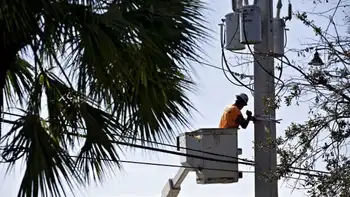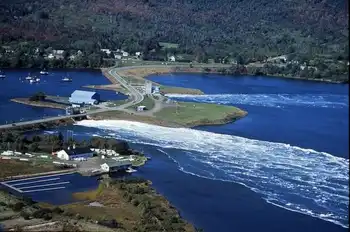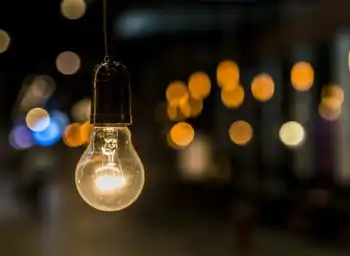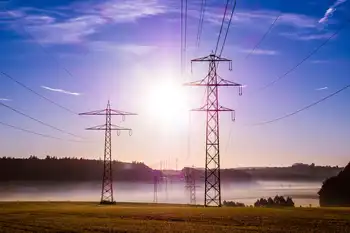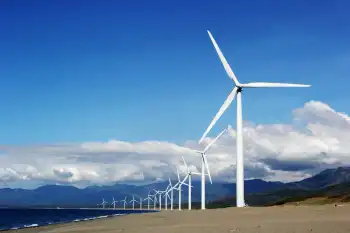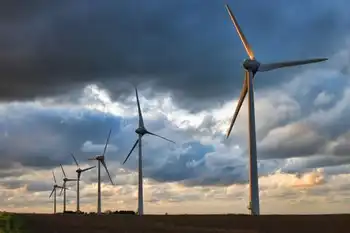Is B.C.'s energy answer blowin' in the wind?
By The Straight.com
CSA Z463 Electrical Maintenance
Our customized live online or in‑person group training can be delivered to your staff at your location.

- Live Online
- 6 hours Instructor-led
- Group Training Available
Just as youÂ’re pondering your own insignificance, whoosh! Your breath is taken away by an equally stunning sight. Only 50 centimetres from the protective glass, a 37-metre-long turbine blade rushes past at over 200 kilometres per hour.
Dubbed the Eye of the Wind, the turbine is intended not only to reduce the ski resortÂ’s dependence on the electric grid, but also to serve as a symbol of the future of renewable energy in the Lower Mainland.
“It is supposed to be iconic and have a message to Vancouver and to the world,” project manager Julia Kossowski told the Georgia Straight by phone from her office on Grouse.
But is the Eye of the Wind a sign of things to come in Vancouver? Will other white towers soon dot the North Shore mountains? Could a wind farm be built in the shallow waters off Richmond? Inconsistent wind conditions in the Lower Mainland make these scenarios unlikely.
However, Grouse MountainÂ’s project is a harbinger of wind-energy projects in other parts of British Columbia, which will soon help power the lights of Vancouver.
Last month, as part of its Clean Power Call program, BC Hydro awarded contracts to six new wind-farm projects in Tumbler Ridge, Chetwynd, and Port Hardy. Yet many renewable-energy supporters want to see the province move faster to increase its wind-farm capacity.
“I would love to see a huge expansion of wind power,” Guy Dauncey, president of the B.C. Sustainable Energy Association, told the Straight by phone from Victoria. “Right now there’s wind rushing past, and it’s not being captured.”
DaunceyÂ’s concern over all this untapped energy is justified. Before November 2009, when Alta-Gas Income TrustÂ’s Bear Mountain Wind Park near Dawson Creek began generating electricity for the grid, B.C. was the only province in Canada without a single operating wind turbine.
So, why the molasses-slow adoption of wind power? According to Dauncey, the availability of cheap hydropower has limited the demand for renewable-energy sources such as wind turbines, which are more expensive. But, in its 2007 B.C. Energy Plan, the Liberal government pledged the province would become energy self-sufficient by 2016, with 90 percent of power coming from clean or renewable sources. With B.C. Hydro paying higher rates to private companies for sustainable energy, there has been an economic incentive to develop new projects. However, even with Premier Gordon Campbell pushing for more green energy, companies must take a leap of faith.
“It’s very high-risk for the developers because they have to put due-diligence work in ahead of time and they might not get a contract,” Dauncey said.
Case in point: NaiKun Wind Energy GroupÂ’s proposal to build a massive wind farm off Haida Gwaii was shelved in March after over five years of planning.
Simon Fraser University political scientist John Calvert, who wrote the book Liquid Gold: Energy Privatization in British Columbia, argues that the governmentÂ’s policy of encouraging private companies to develop sustainable energy has contributed to the lack of progress on wind power in B.C.
“BC Hydro was working on the wind file,” Calvert told the Straight by phone from his office at SFU. But in 2002, Campbell’s newly elected government barred the Crown corporation from getting into wind, he noted. “They essentially handed over all that work to private interests.”
Calvert asserted that the recent awarding of wind-power contracts is akin to handing valuable public assets to the private sector. “We’re allowing private companies to make use of public land and losing all the most promising locations on Crown land for wind,” he said. “Twenty or 30 years from now the public is going to be scratching their heads, wondering why B.C. gave away the future of sustainable energy.”
But according to Dauncey, private companies are better suited to developing wind energy. “They have the skills. There’s no guarantee that public ownership will lead to sustainable solutions,” he said, pointing to BC Hydro’s controversial proposal of a gas-fired power plant in Nanaimo that didn’t go forward in the early 2000s after public opposition.
Dauncey sees wind power as playing a central role in addressing global warming. If B.C. can generate a significant surplus of green energy to export to the U.S., there will be less of a need for coal-fired plants there, he said.
Calvert, on the other hand, worries that the potential for energy exports to the States will lead to further energy privatization. Because wind energy can be unreliable, private companies won’t be able to sell it without being backed up by flexible hydropower, which could lead to more control over BC Hydro being handed over to private interests, according to Calvert. “The owners of intermittent wind energy are going to want access to storage in order to firm up their energy for sale, which further subsidizes them,” he said.
In Dauncey’s view, concerns about privatization pale in comparison to the potential impacts of global warming. “People who are opposed to exporting green energy don’t understand the severity of global warming,” he said. “Every time we do nothing, we have to answer to our grandchildren. Doing nothing is immoral.”
While Grouse Mountain’s Eye of the Wind may symbolize the future of wind power in B.C., it also illustrates the province’s snail-like pace in harnessing this energy source — a dispute with BC Hydro over safety regulations has prevented the turbine from producing any power.
Until the stalemate between Grouse and BC Hydro is broken, the Eye of the Wind will continue to fulfill only half of its mandate: to remind Vancouverites of the need for sustainable energy.
“We want people to look at it and think, ‘If Grouse could put this together, what can I do?’ ” Kossowski said.





